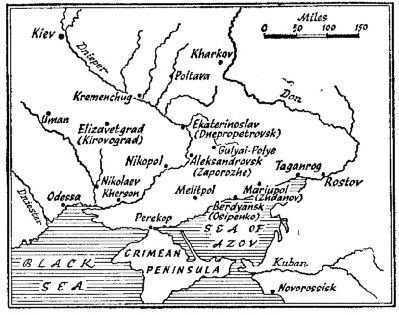Many North American high school students cannot with confidence name which countries fought on which side during the First World War, or even its start and end dates. Therefore, it is not surprising that the Russian Civil War, as one of the most significant products of the world war that preceded it, remains poorly understood. Most often it has been simplistically portrayed as a wrenching, total conflict between Bolsheviks (Reds) on one side and monarchist remnants of the defeated Tsarist armies (Whites) on the other.
A hypothetically curious (or curiously hypothetical) student, on digging further, would find that contingents of troops from 14 different nations intervened against the Bolsheviks, and perhaps some scant mention of the struggles of Poland, Finland, and the Baltic Republics to escape the Russian Empire. But our student would have to dig even further to discover something of the nature of the many-cornered conflict in the Ukraine, a region that saw the most savage and concentrated fighting of the war. And only then would he find some mention of the peasant anarchist guerrilla leader, Nestor Makhno, who led a large and surprisingly effective insurgency against all comers: Germans, Austrians, other Ukrainian nationalists, Cossacks, the Reds, and the Whites. Uneducated as he was, Makhno proved politically astute in articulating the interests of the peasants of the Ukraine, and his remarkable tactical skill in handling his troops make him worthy of consideration as one of the last great cavalry leaders.
Nestor Makhno was born on October 27, 1889 in the town of Gulyai-Polye near Ekaterinoslav (now called Dnepopetrovsk) in the Ukraine. After a difficult and impoverished childhood, he was swept up in the political turmoil of the 1905 revolution and joined the Anarchist movement as an agitator. He was arrested by the Tsarist police in 1908 and imprisoned in Moscow. There he met the Anarchist activist Peter Arshinov, who would complete his political tutoring. He was released in early March 1917 in the general amnesty for political prisoners that followed the abdication of the Tsar the previous month. He returned to Gulyai-Polye and began organizing the local peasants and workers into local soviets (councils of locally elected people formed to replace the Tsarist local government agencies - as yet these soviets did not have any ideological connotation; in fact, the Bolshevik Party scarcely existed at all in the Ukraine).
Makhno's aim was to create resistance to the power of the police, landowners, government agents and taxmen that he know would follow the establishment of any central government. This was in accordance with the historical preference of Ukrainian peasants to live in small communities independent of any regional or state authority, with each peasant owning his own land and associating freely with others. Ukrainian folk culture is filled with anti-authoritarian heroes who resisted the confiscations and depredations of faraway governments. Nestor Makhno was able to capture the support of peasants across the Ukraine, and this would prove the greatest factor in his success.
Map

More Russian Civil War in the Ukraine
-
Introduction
The Civil War Begins
The Whites Advance
The Whites Retreat
Betrayal
An Anarchist Army?
Armies of the Russian Civil War
Summons (poem)
Back to Cry Havoc #32 Table of Contents
Back to Cry Havoc List of Issues
Back to MagWeb Master Magazine List
© Copyright 2000 by David W. Tschanz.
This article appears in MagWeb (Magazine Web) on the Internet World Wide Web. Other military history articles and gaming articles are available at http://www.magweb.com